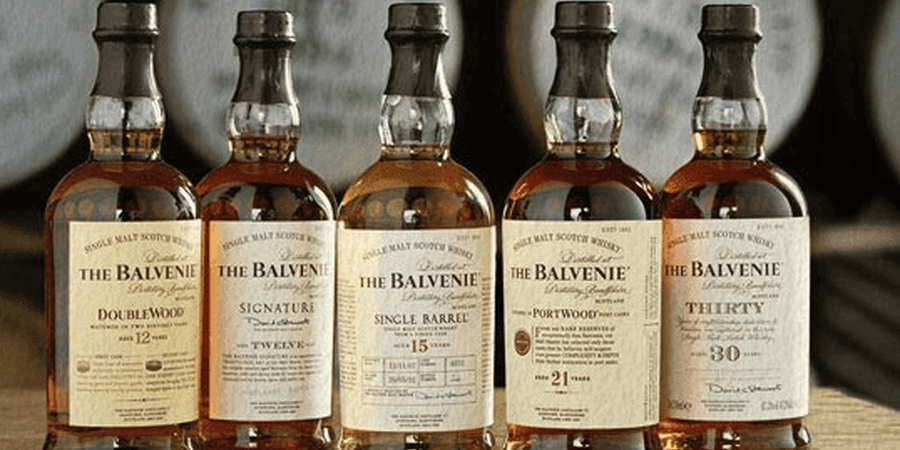Balvenie Whisky - The regional categorization is a vexed issue in whisky: it may be a handy way of grouping distilleries together geographically, but it can be a tricky business identifying a stylistic continuity between all the whiskies in Perthshire or Speyside.
[%snippet beer%]
But if you can't claim that there is a 'Speyside style', or isolate certain qualities which make Speyside the best whisky-making region on the mainland, how do you explain such a concentration of distilleries in the area - a part of the Highlands which was, in the early days of whisky, a pretty remote part of the world?
David Stewart, William Grant's grandly-titled Malt Master, is happy to admit ignorance on this point. 'All of the quality distilleries are here in this central part of Speyside,' he says. That's the mystique of Scotch, We've all got highly-sophisticated equipment, but we can't tell what makes the difference'. He's pretty sure what makes Balvenie such a dramatically different dram to Glenfiddich, even though they share the same site and use the same malt and water.
The character comes from the still. Glenfiddich is coal fired, Balvenie is gas fired. The shape of the stills is different: Balvenie has bigger stills with shorter necks and that's where the flavours change. Maybe the ten per cent of floor-malted barley helps, but I think it's the stills.'
Other influential factors include great wood management and the use of old dunnage warehouses. 'It'i not just age th;ii makes whiiky great,' says David. 'It's age and wood.' This underpins his decision to make life interesting (or difficult) for himself by creating a Balvenie range in which each malt shows a subtly different wood influence.
If we were just to age the Founder's Reserve and do it as a 12-year-old or a 15-year-old, we wouldn't see much difference between them. We had to take a different route, so we produced Double Wood, [where the malt is aged for 10 years in ex-Bourbon barrels and finished in sherry butts]. Then we started doing Single Barrel, and at a higher strength with no chill filtering; then Port Wood and now vintage casks.'
This freedom to experiment is one of the advantages of Grant's family-owned status. 'We can do things quickly. The family is steeped in whisky, but we are encouraged to be innovative, we can go against the trend -with the Balvenie range, or with Black Barrel, where we were determined to make the only single grain whisky that really works.'
If the William Grant portfolio was The Byrds, then Glenfiddich would be Roger McGuinn and Balvenie would be Gene Clark, the underrated genius. David, as Grant's master blender, is in charge of the entire range, from malts to blends to single grain and whisky liqueur, and his special affection for Balvenie is obvious. 'I've been at Grant's for 35 years,' he says. 'It's been my only job


